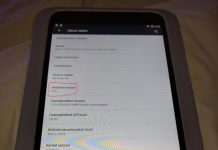 People think of the Kindle Fire as an Android tablet, but that’s not quite completely correct. The Fire runs a heavily-modified version of Android 2.3, a version of Android that Google did not even intend to be used by tablets (and consequently blocked access to the Android Store on devices that used it and did not hew to a smartphone profile).
People think of the Kindle Fire as an Android tablet, but that’s not quite completely correct. The Fire runs a heavily-modified version of Android 2.3, a version of Android that Google did not even intend to be used by tablets (and consequently blocked access to the Android Store on devices that used it and did not hew to a smartphone profile).
ReadWriteWeb reports that this is leading app developers to have to make some tough decisions: do they make an app that can run on Fire’s nonstandard Android but may not run on other devices (or look good on 10” screens bigger than the Fire’s 7”), do they make an app for Android 3.0/4.0 that may not run on the Fire, or do they double their effort in order to do both?
The problem for Google and tablet makers that have bet on the Honeycomb-class devices (Samsung, Motorola (NYSE: MMI), HTC) is that other publishers with fewer resources will have to make an app-fatigued decision about how to reach people on tablets beyond the iPad. If the Kindle Fire can sell in volumes even half that of Apple’s iPad, they’ll likely want to reach that audience, which for many will mean building a Kindle Fire-style app for an older operating system with a unique user interface as opposed to building an app for tablets that are using more advanced versions of Android.
From that perspective, the more successful the Fire is, the more of a problem it could pose for Android as a whole. (And then there’s the Nook and Kobo Vox, which could have Amazon quirks of their own.) This could lead to trouble down the road for a number of popular apps, including third-party e-readers. Just how much trouble remains to be seen, however.































